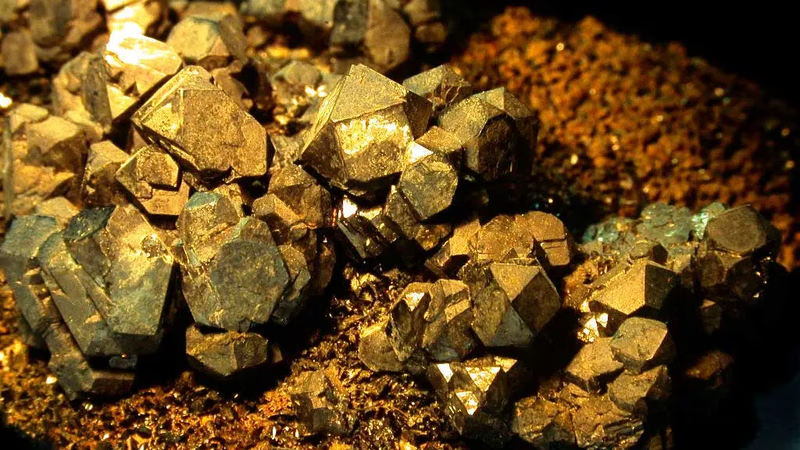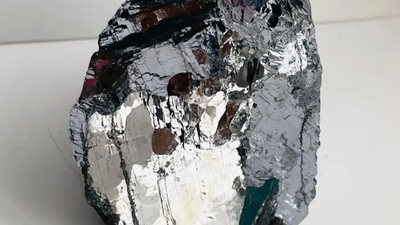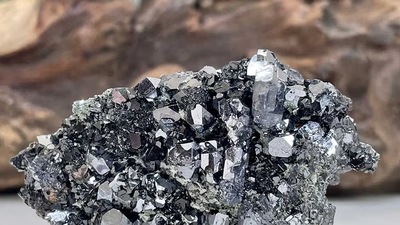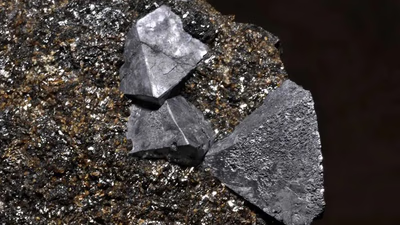
Galena mining operations in the Middle East showcase regional trade potential.
Iran has important galena mines and is known as one of the largest galena producers in the region. Mazandaran, Gilan and Khorasan provinces are among the regions where there are galena mines. Oman also has important galena mines. Some of the areas where galena mines are located include areas such as Sohar and Jebel Shams. There are also galena mines in some areas of Iraq. The rate of extraction and the amount of production in each country changes over time. To access accurate and up-to-date information about galena mines in the Middle East, the relevant mineral resources and mining organizations of each country can be reliable sources.
Various technologies are used to extract galena mines and convert it into lead metal in the Middle East. The extraction of galena from the mine is usually done through mechanized methods. The use of various devices and machines such as hammering machines, loaders, bulldozers and hydraulic jacks is effective in the mining process. After extraction, galena is broken and crushed into smaller size. This step is usually done using stone crushers and crushing devices. After this step, the crushed material is often passed through a sieve to separate the different particle sizes. This step is done using sieves and separation systems.
Flotation is an important process in converting galena to lead metal. In this process, flotation techniques are used to separate the desired minerals such as lead. Flotation usually involves the use of flocculating and blowing chemicals that cause the separation of the desired minerals. After separating the lead from the galena, the lead is in metallic form. In this step, the lead is melted and the existing pollutants such as sulfur, silicon and iron are removed from it. Lead contaminated in previous stages may contain additional contaminants. Chemical and mechanical processes are used to purify lead and remove additional pollutants.
It is important to evaluate the mineral resume of each region, including West Asia and other regions. This includes the amount and quality of galena mines, extraction capability, amount of available reserves and geographical and geological conditions. If West Asia or other regions have galena mines with a favorable resume, investing in them can be attractive. It is also important to evaluate the technologies and processes of galena mining and processing in each region. If West Asia or other regions have the ability to use advanced and efficient technologies, investing in them can be economical and profitable. Examining the market and demand for galena is also important. If West Asia or other regions have strong markets and high demand for galena, investing in them can have a good return.
Galena mines in the Middle East can meet the internal needs of these countries for galena. Due to the production and extraction of galena in these areas, the countries of the Middle East can provide part of their internal needs in the field of galena from domestic sources. The use of domestic sources of galena can have economic benefits, including reduced dependence on imports, employment in the mining and processing industry, and reduced transportation costs for importing galena. The internal needs of each country for galena change, and on the other hand, the ability to produce and extract galena from the domestic sources of each country also varies. Middle Eastern countries may still need to import galena from other global sources to meet their domestic galena needs.
-

Galena, a natural lead sulfide mineral, is the primary source of lead extraction in mining. Found in sedimentary rocks, it forms in hydrothermal and carbonate systems. Major lead mines globally include Bogan in Romania and Stone in Wisconsin. Lead derived from galena is crucial across various industries, including batteries, plumbing, alloys, and paints. Its anti-corrosion properties make it valuable for transporting water and chemicals. The decomposition process transforms galena into lead metal through high-temperature reactions with carbon and water. This industrial process requires specialized equipment to ensure efficiency. Lead"s applications extend to glass production, electrical insulation, and even jewelry due to its aesthetic appeal.
Additionally, galena"s uranium content allows for potential use in nuclear energy extraction. Despite its utility, health concerns have led to the search for non-toxic alternatives in some applications.
-

Iran and Oman are key players in galena production within the Middle East, with significant mining activities in provinces like Mazandaran, Gilan, and Khorasan in Iran, and regions such as Sohar and Jebel Shams in Oman. Iraq also hosts galena mines. The extraction process employs mechanized methods using advanced machinery for efficiency. After extraction, galena undergoes crushing and sieving to prepare it for flotation, a critical step that separates lead from impurities. The quality of galena mines varies across regions, influencing investment attractiveness based on extraction capabilities and technological advancements. Evaluating market demand is essential; strong local markets can enhance profitability for investors. Domestic production can reduce reliance on imports, fostering economic benefits such as job creation and lower transportation costs. However, fluctuating internal needs may still necessitate imports to meet demand.
-

China leads global galena production, with significant reserves in Hubei, Hunan, and Shangsha provinces. Russia and Australia also contribute notably to the market, with mines located in Siberia and New South Wales respectively. The exact global reserves remain uncertain due to various factors including mining complexity and lack of comprehensive data. In the U. S. , states like Montana and Illinois are known for their galena mines, but precise reserve figures are similarly elusive. Efforts to replace lead in certain applications with environmentally friendly alternatives are ongoing, focusing on recycling and innovative materials. The global production of galena was approximately 22 million tons in 2020, highlighting its importance in various industries.
As environmental sustainability becomes a priority, the industry faces challenges related to resource depletion and the need for more efficient extraction methods. Future research may lead to better resource management and alternative solutions.
-

The galena market in West Asia is shaped by domestic production and import needs, particularly in countries like Iran, Turkey, and Saudi Arabia. These nations have varying levels of lead mining capabilities, influencing their reliance on imports. Infrastructure projects and urbanization drive demand for lead and galena, while competition from local producers can impact export opportunities. Trade barriers such as tariffs and regulations pose challenges for exporters, necessitating strategic planning and compliance with local standards. Effective communication with local importers and trade organizations is crucial for navigating these obstacles. Additionally, understanding market dynamics, including economic and political changes, is essential for successful export strategies. Diversifying markets can mitigate risks associated with dependence on specific regions. Continuous improvement in product quality and innovation can enhance competitiveness in the Middle Eastern market.




